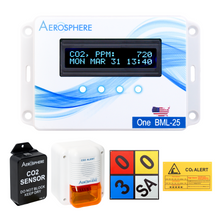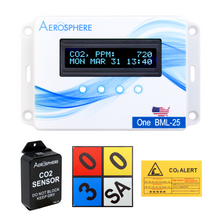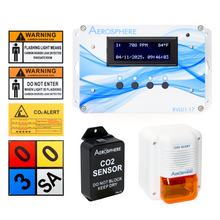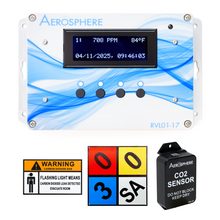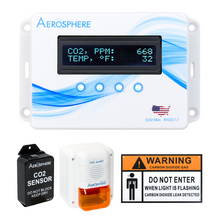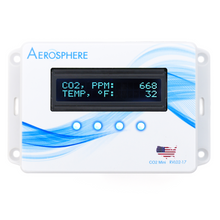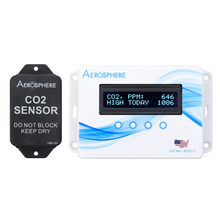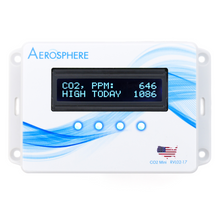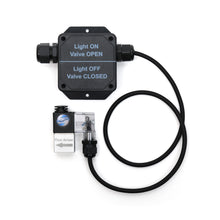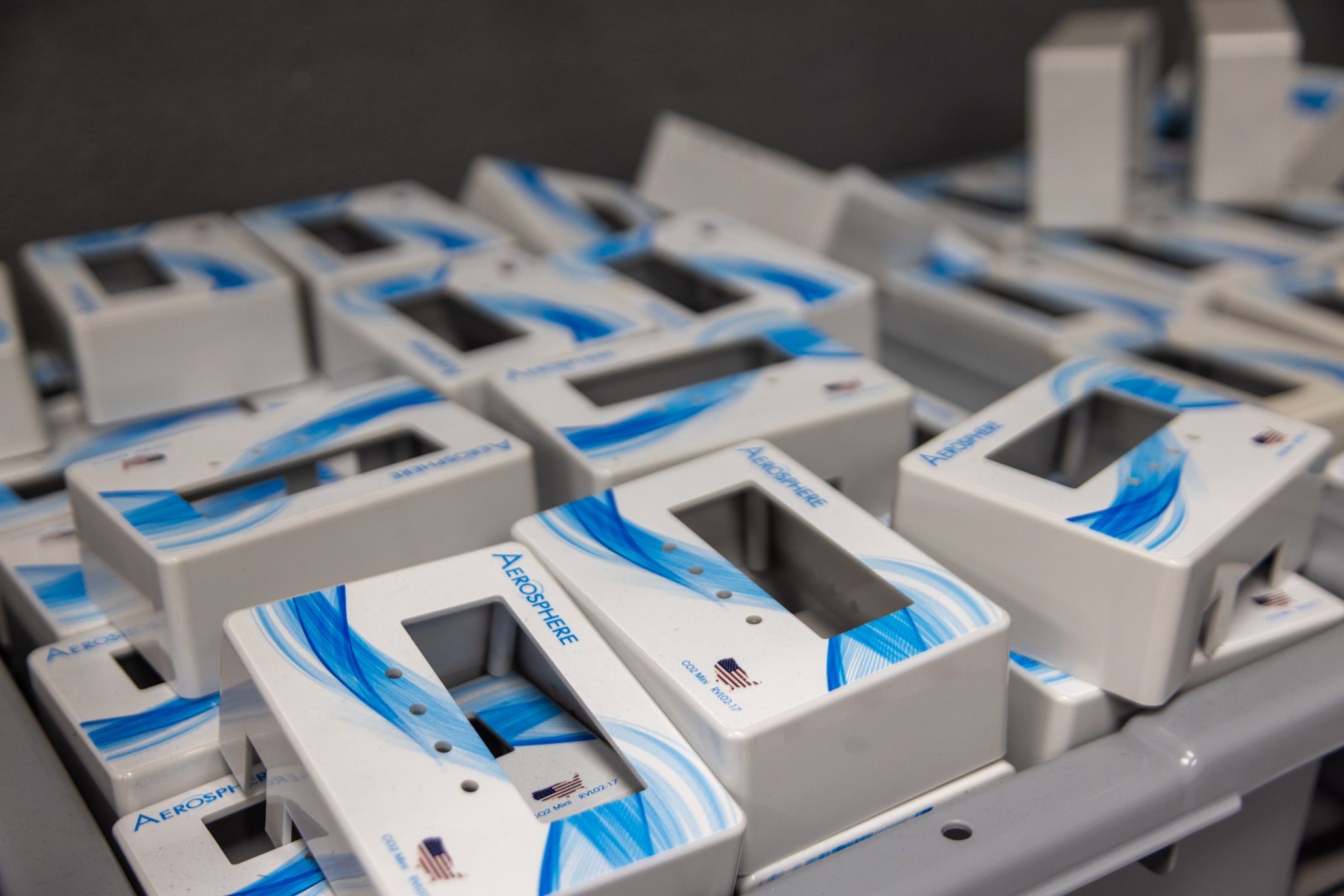What CO2 Levels are Dangerous?
Understanding the dangers of rising CO2 levels is critical. As its concentration increases, so do the potential health risks. Being aware of these hazards and how CO2 exposure affects the body can help prevent dangerous situations.
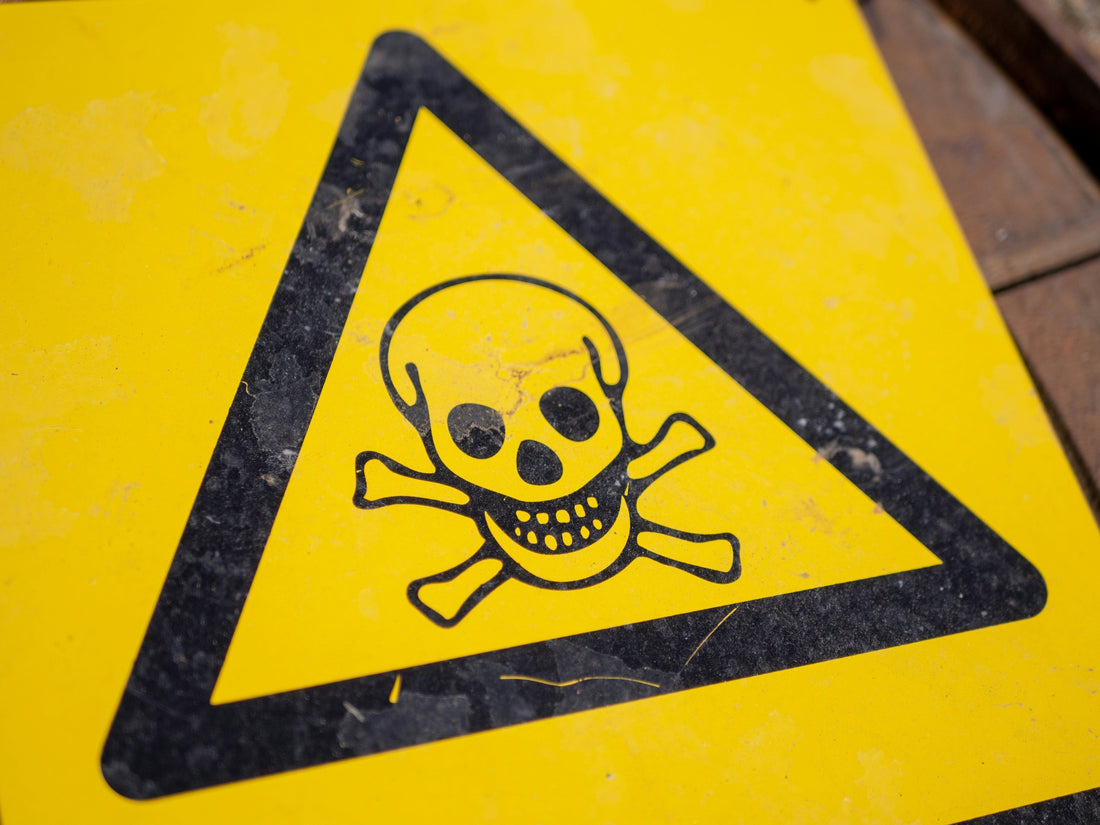
What is CO2 And Where Does it Occur?
Carbon dioxide is a gas that is naturally produced through human activities such as burning gasoline, coal, oil, and wood. People naturally exhale CO2 as a byproduct which can contribute to the levels in the air, especially indoors. Some industrial applications of the gas include carbonating soda, enhancing plant growth in cultivation, use in fire extinguishers, production of dry ice, and various laboratory processes.
According to the National Library of Medicine (NIH), CO2 is 1.5 times heavier than air, where it can seep through building from cracks in the floors and foundation. Indoor concentrations have various factors, such as the amount of people present in one room, how long the room has been occupied, the size of the room/area, the amount of outdoor air is entering the area, and even the concentration of CO2 from outside.
While carbon dioxide is generally not considered dangerous in indoor environments, overexposure can occur when allowing a gas leak to persist, handling dry ice improperly, or working in confined spaces with limited ventilation. Although lethal consequences of carbon dioxide overexposure are rare, prolonged exposure to moderate levels can pose a significant health risk. With its colorless and odorless nature, people are unable to see it or smell it at any level of parts per million (ppm).

How to Know if You've Been Expose to High Levels of CO2
According to the USDA regulations, symptoms will vary depending on the level of CO2 one has been exposed to. The levels of exposure and accompanying symptoms are in the following order:
|
400 ppm (0.04%) |
Normal outdoor air |
|
5,000 ppm (0.5%) |
OSHA Permissible Exposure Limit (PEL) and ACGIH Threshold Limit Value (TLV) for 8-hour exposure |
|
10,000 ppm (1.0%) |
Typically no effects, possible drowsiness |
|
15,000 ppm (1.5%) |
Mild respiratory stimulation |
|
30,000 ppm (3.0%) |
Moderate respiratory stimulation, increased heart rate and blood pressure |
|
40,000 ppm (4.0%) |
Immediately Dangerous to Life or Health (IDLH) |
|
50,000 ppm (5.0%) |
Strong respiratory stimulation, dizziness, confusion, headache, shortness of breath |
|
80,000 ppm (8.0%) |
Dimmed sight, sweating, tremor, unconsciousness, and possible death |
Long-term exposure to CO2 is defined as 8 hours at 5,000 ppm, while short-term exposure is 15 minutes at 15,000 ppm.
At elevated CO2 levels, individuals may experience symptoms such as drowsiness, headaches, dizziness, shortness of breath, increased heart rate, confusion, and impaired cognitive function. In extreme cases, very high concentrations can lead to unconsciousness or asphyxiation.
Ensuring proper ventilation—whether by opening windows and doors or using HVAC systems in industrial settings—is crucial for diluting indoor pollutants, including carbon dioxide, and maintaining healthy indoor air quality.
Why It's Important to Measure CO2 Levels
Real Life Cases

On September 7, 2011, CO2 leaking into the walls of a McDonald's in Pooler, Georgia, caused an 80-year-old woman, Anna Felton, to die. Nine others were found unconscious in the toilets. The chemical compound trickled into the woman's bathroom, causing Felton and several others to pass out. Unfortunately, she passed away shortly in the restaurant due to asphyxiation. Three of the victims were firefighters who responded without specialized protective gear, while five customers and one employee were also hospitalized from the CO2 leak incident.

In August 20, 2024, Canadian-based Northland Power confirmed a CO2 leak at Hai Long offshore project in Taiwan. 17 on-site workers were hospitalized after the carbon dioxide leaked in the substation, leaving 14 injured and three in critical condition. The emergency services were immediately deployed with help administrated by the Changhua County Fire Department. The Hai Long Offshore Wind consortium confirmed a fatality on August 26, and the other two victims passed since the incident. Construction for the project is still underway, with no mention of any recent incident reports.

More recently on March 10, 2025, a north Texas school was recently closed due to high levels of CO2. The Maypearl Fire Department shut down Maypearl School in Ellis County after raised concerns over the students, their parents, and staff after months of complaints. Children were reported to be coming back from school experiencing headaches, nausea, and dizziness. The likely cause of the CO2 leak may come from the age of the building as well as the outdated systems and filters in place. Maypearl Independent School District (ISD) board recently hosted a board meeting for parents over the concerns of poor air quality. "I shouldn't have to worry about the air that our children are breathing", one parent remarked during the event.
Superintendent Richie Bowling explained the engineers had repaired the school’s HVAC system, replaced damaged vents, and changed the HVAC filters. However, the board opened the school without the fire department's approval. Parents are still concern and frustrated towards the school's lack of accountability and self-aware for safety.
Conclusion
Carbon dioxide's subtle symptoms and effects can leave people vulnerable to overexposure without realizing the danger until it's too late. These incidents demonstrate why measuring CO2 levels is essential for preventing dangerous situations. CO2 overexposure can lead to suffocation, fainting, and even death, making it even more crucial to implement proper carbon dioxide education and sensing and monitoring devices where possible.


